Pay-per-click (PPC) advertising is essential to any effective search engine optimization (SEO) strategy because it can offer immediate results.
Did you know? Creating well-crafted PPC ads can boost your brand awareness by up to 80 percent, and 65 percent of customers click through on paid advertisements.
You can achieve many different goals with PPC. The most common reasons to use pay-per-click ads include improving brand visibility, identifying new leads, bringing more traffic to your site, and increasing conversions.
But, while there are many positive motivations for investing in PPC marketing, the main reason boils down to growth. While PPC is quite easy to execute, getting it right does take some planning and preparation.
Here, we will look at all the essential ingredients for creating a successful and sustainable PPC campaign strategy. Here's what our ultimate PPC guide will cover:
- PPC: Important Terms
- Benefits of PPC campaigns
- Types of PPC campaigns
- PPC Platforms
- PPC vs Organic
- Creating A PPC Campaign: Step-by-step
- PPC Campaign Strategy & Examples
PPC marketing: Important terms
Before we delve any deeper into our PPC guide, let’s take a look at some essential PPC marketing terms that you need to know.
Search Engine Marketing (SEM)
Leveraging search engines to market your brand, services or products to specific target audiences through paid and organic techniques.
Cost Per Click (CPC)
How much it costs to earn a single conversion or sale from your PPC ad.
Cost Per Mille (CPM)
This is also known as cost per thousand. With a CPM pricing model, advertisers or marketers pay for every 1,000 ad impressions.
Ad Rank
This is ultimately where your ad appears on a search engine results page (SERPS). Ad rank is calculated by multiplying your quality score by your maximum CPC bid.
Quality Score
This is a metric that measures the relevance of a PPC marketing ad.
Bid
The maximum amount of money or budget a PPC marketer is willing to spend on each ad click.
Ad groups
The grouping or segmenting of your PPC ad keywords into certain categories or themes.
Landing page
The webpage or destination that a user will click through to when engaging with a paid ad.
Read: Our full glossary of digital marketing terms to get to grips with all the terms and lingo that will help you succeed as a pay-per-click marketer.
Anatomy of a PPC campaign
Now that you’re up to speed with essential PPC marketing terms, we’re going to look at the anatomy of a well-crafted pay per click campaign.
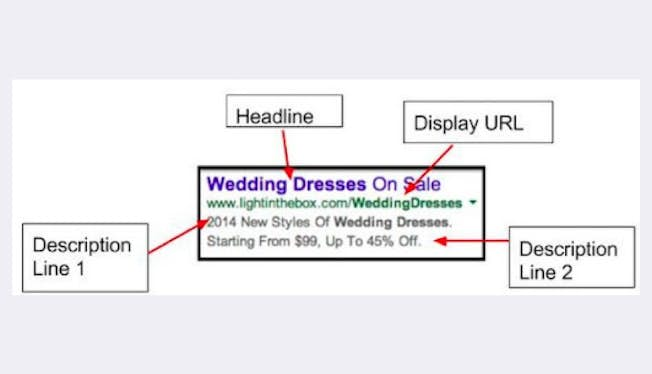
As you can see, there are four key elements to a well-balanced PPC campaign. Here you have:
- The main headline includes the primary key term ‘wedding dresses’ (loaded at the front) and tells the user exactly why they should click on the ad
- The display URL features the brand name as well as the primary keyword. It’s short, punchy, and scannable
- The first description forms the opening section of the ad’s body copy. It sheds a little more light on the headline and also features the primary key term
- The second description forms the next or concluding section of the ad’s body copy. This is an opportunity to share USPs, specific motivations to click and add a strong call to action (CTA).
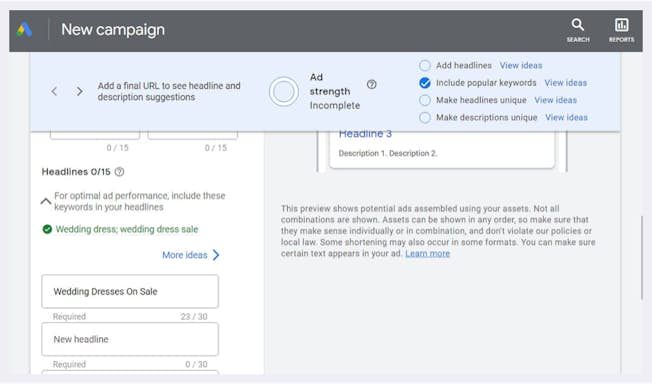
From the backend, you have the option to set a range of parameters including:
- Target keyword
- Maximum bid
- Target demographics
- Target regions and locations
- Headlines
- URL
- Description lines
Our Beginner’s guide to Google’s Pay Per Click Advertising will give you practical tips on how to set up and launch a successful paid ad.
The benefits of using PPC in your marketing campaigns
The main benefits of launching a PPC campaign strategy include:
- You can reach a wider target audience quickly while earning a healthy return on investment (ROI) for your efforts
- You can appear at the top of specific SERPs pages almost instantly and start earning traffic
- You can connect with ‘warm’ leads that are likely to engage with your brand and buy your services or products, by reaching them at the right stage of their journey
- You can use your PPC data to enhance and optimize other areas of your digital marketing strategy.
Essential types of PPC campaigns
Next, we’re going to explore the different types of PPC campaigns that you can weave into your digital marketing strategy.
Search
Search-based PPC campaign marketing ads are those that appear in SERPs, much like the wedding dress example we explored above.
Search-based PPC ads typically appear in the top left or right-hand corner of a search results page and include a clickable headline, URL, and body copy.
Display
PPC display ads are arranged in a similar format to search-based campaigns, but they include a visual element to improve clicks and engagement. These types of PPC ads include imagery or graphics (often in the form of banners).
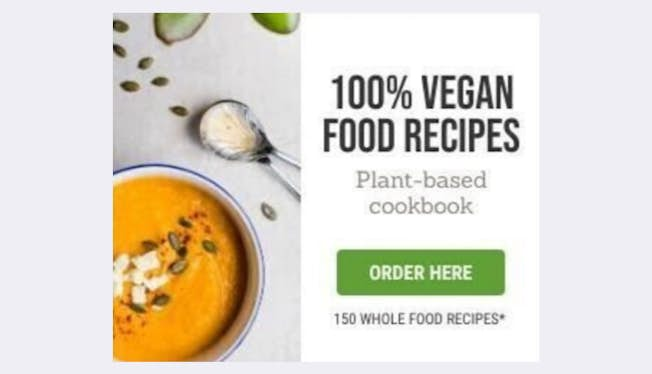
This is a solid example of a visually-engaging, digestible, and well-balanced display-style PPC advertisement.
Top Tip: Try for yourself how to build a responsive ad with our downloadable toolkit, the Google Ads Creator Template.
Remarketing
PPC-based remarketing ads are usually presented in a display-style ad format, but they’re designed or programmed to reach customers that have previously engaged with a specific landing page, service or product.
By targeting a consumer using retargeting, you’re more likely to tap into a warm lead and close a sale. In fact, according to a study by Semrush, people are up to 70% more likely to invest in your product or service when you use retargeting.
Try: Our free and practical remarketing lesson to get started with your paid advertising retargeting strategy.
Sponsored social
Paid or sponsored social media ads work in a similar way to search ads as you can add your content and set your ad parameters before launching your campaign. Social media ads are specific to each platform (Facebook, Instagram, Twitter, LinkedIn, etc.) and you can view each channel’s native analytics data to measure your performance.
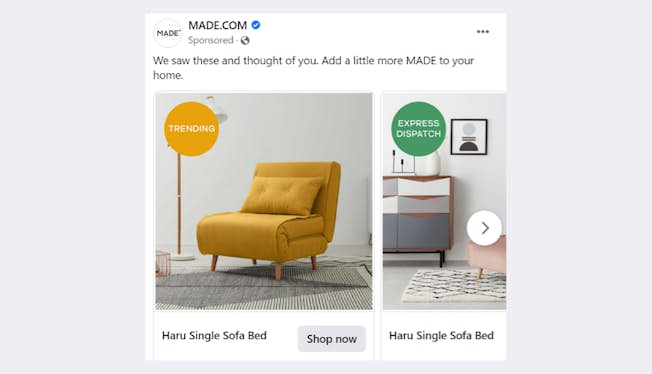
This particular example is a paid Facebook ad. The ad is presented in a carousel format with a personalized body copy as well as a mix of curated products and a ‘Shop Now’ CTA button to encourage click-throughs.
Video
You can use paid video ads for search engines as well as various social media platforms. Like static ads, paid video ads are highly-targeted and include a headline, body copy, a CTA button, and of course, engaging video content to entice users to engage.
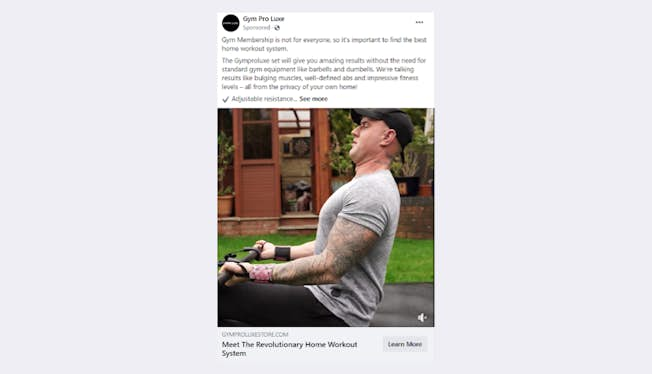
This is an example from Gym Pro Luxe. It immediately outlines the products’ USPs and benefits and includes a slick demonstrative marketing video with a CTA placed neatly underneath. This particular ad comes in the form of sponsored social media content.
Shopping
Paid Google shopping ads are highly-visual and appear in a carousel format above the main search engine results list. Succinct and punchy, these ads are served to users based on their search or shopping intent and typically feature the product price, headline, and brand name.
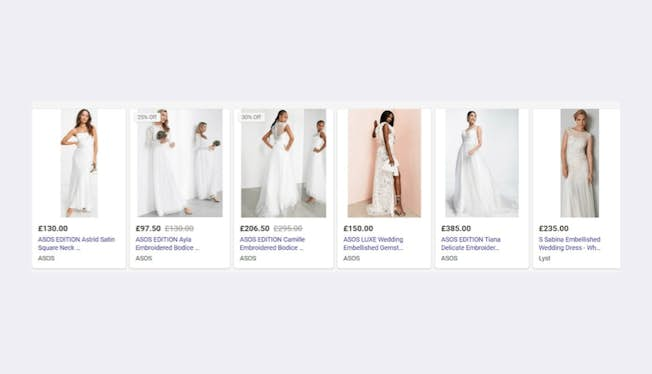
This particular example is a shopping results carousel based on the search term ‘wedding dress sale.’ As you can see, two of the results feature a ‘%’ off’ tag to highlight the fact that the items are on sale.
Try: Our library of free PPC campaign marketing lessons to sharpen up your skills and strategy.
PPC platforms
We’ve studied the key types of PPC ad content—now let’s look at the three main pay per click platforms you can leverage for your campaigns.
Google Ads/AdWords
Google Ads or AdWords is an essential platform for creating and launching your search engine-based PPC strategy content.
This intuitive platform allows you to conduct detailed PPC keyword research, set campaign budgets, and build targeted ads in text-based search, display, video, banner, and shopping formats.
Budget: The average cost per click (CPC) for Google Ads-based campaigns is between $1 and $2.
Read: Walkthrough: Google Ads with Cathal Melinn for a step-by-step walkthrough of using the platform for creating paid ads that get results.
Bing
While it’s not quite as well-trodden as Google, Bing remains one of the world’s most popular search engines. That said, launching PPC marketing content on the platform will give you the tools to connect with a broader audience that you can convert into paying customers.
Formerly named Bing Ads, the search engine’s PPC platform is formerly named Microsoft Advertising. The platform is easy to navigate and shares many of the same characteristics as Google Ads. The best thing about Microsoft Advertising is the fact that you can import campaign content, details, and data from Google Ads or AdWords directly into Bing. As such, you can run similar campaigns concurrently across both PPC platforms for maximum engagement.
Budget: The average cost for a paid Bing or Microsoft ad in terms of CPC is $1.54.
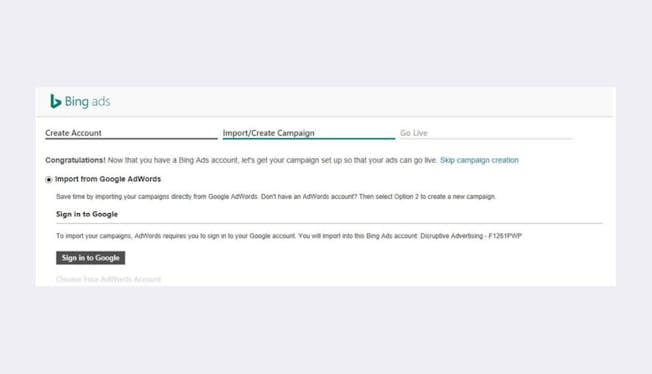
Facebook is still popular across many user demographics worldwide and as such, it’s a popular (as well as potentially rewarding) social media-based PPC platform.
Setting up campaigns with Facebook ads is a simple process, with dropdown boxes and text boxes that allow you to set your target demographics, target locations, ad lengths and budgets, and of course, ad content.
Budget: The average cost of a paid Facebook ad is $1.72. But, this cost does vary slightly according to niche, industry or sector.
PPC vs organic
Both PPC and organic advertising are essential to a consistent, creative, and balanced digital marketing strategy.
In many ways, paid search is more direct and delivers swift results in terms of brand awareness, engagement, and conversions. But, without utilizing organic marketing or advertising, you will miss out on a wealth of brand-boosting and customer loyalty-inspiring opportunities. Here’s a quick ‘PPC versus organic’ guide to help you get to grips with each discipline:
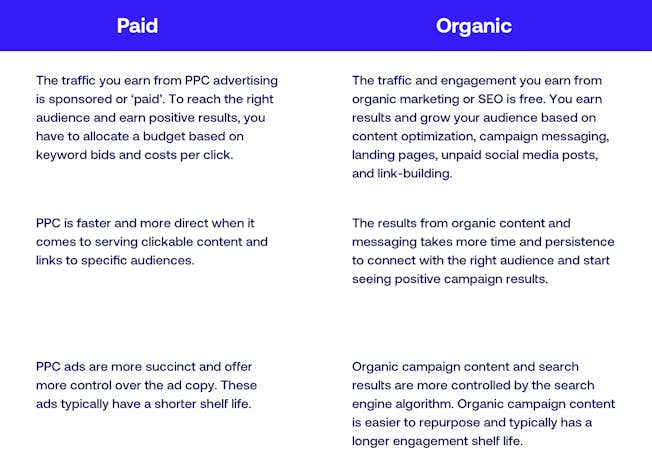
Try: Our no nonsense video lesson on paid versus organic search for a deeper dive into the subject.
Creating a PPC marketing campaign
To guide you on your path to PPC marketing success, here are the essential steps to developing a successful pay per click campaign.
Step 1: Start by Optimizing Your Website
Before you start any PPC campaign, it’s crucial that you first step back and address the landing pages that will work in conjunction with your ads.
Here's why it’s so important: when prospects click on a PPC ad, it’s because the content of the ad intrigued them, and they want to know more. But if the link they click takes them to an unrelated or generic page on your website, such as your homepage, then that prospect will likely bounce.
A click on a PPC ad is a desire to find out more about what the ad was about, which is why it’s integral to create customized landing pages that coincide with the content of the ad. For instance, if you were running a PPC ad offering two-for-one pizzas at your restaurant, then the landing page for the ad should have more details about the promotion, a coupon to redeem the free pizza or something else that relates specifically to the ad content.
You must also optimize your landing pages for performance because if prospects click your ad and end up on a page that doesn’t load quickly, is difficult to navigate, or has other technical problems; then they will also bounce.
Take the time now to maximize your site conversions so that prospects who come later will be more likely to follow through. Here are a few ways you can optimize your site for conversions:
- Use clear and compelling calls to action
- Use a simple design with lots of white space
- Write compelling and attention-grabbing headlines
- Write copy that’s clear and straightforward
- Use video and images strategically to retain attention
- Make information easy to digest by using bullets, stand-out quotations, and visuals
Step 2: Select a Bidding Strategy
There are several different bidding strategies to choose from, and picking the right one will depend on a variety of factors, including your budget, your experience with PPC, and your goals.
One of the first choices you'll have to make is between manual and automated bidding. If you’ve never done PPC before, you might want to start with manual bidding, especially if you're working with a low budget, because manual bidding allows you to set a cap on your cost per click. The trade-off with manual is that you don’t have an opportunity to optimize your bids.
On the other end of the spectrum is automated bidding, which will reduce the amount of time you'll need to put into managing the campaign, but you might end up paying a little more.
There are several different bidding strategies when it comes to automated bidding, and you can learn more about different AdWords strategies directly from Google. Essentially, there are various strategies you can choose depending on whether your goal is to increase conversions, visibility, or traffic.
Step 3: Set a Budget
Budget is an important part of a PPC campaign, but the best part about this type of advertising is that you can still do it on a limited budget, and you can retain close control over how much you spend.
If you're new to PPC, don’t have a lot of money to throw around, and just want to test the waters, you can still get started with an investment as small as $25. You can work out what your budget should be with this simple formula:
The profit portion of the equation involves how much profit you make per conversion. To determine the commission that pays for the Ads, you have to decide how much of that profit you can afford to sacrifice while still making the campaign worthwhile.
For your conversion rate, you'll have to look at past data, or you can use the industry standard, which Search Engine Watch says is 2.7 percent. Then multiply the maximum CPC by the number of clicks you ideally want, multiplied by the number of days (go for at least a month) to get your budget.
Step 4: Research Your Keywords and Choose Them Wisely
Keyword research is arguably one of the most important aspects of a PPC campaign because it’s the backbone of the entire process. Without keywords, there would be no way for the search engine to know when to display your ads. Check out our SEO Keyword Research Toolkit if you need help in this area.
Just as importantly, choosing the right keywords can virtually guarantee the success of your campaign, and promise you the most views, the most click-throughs, the most traffic, and the most conversions. Here are a few tips for selecting keywords:
- Have a look at what your competition is using
- Think about what you’d search if you were a customer looking for your products or services
- Use Google’s keyword search or some other tool to identify opportunities (both Moz and Semrush offer great keyword tools)
- Be specific with your keywords rather than generic or vague
- Choose local keywords when possible
The better you are at choosing keywords, the more hits you'll get. Beyond that, however, you'll also be rewarded with a higher quality score and a lower cost per click as a result.
Another important element of keyword selection is negative keywords because these will filter out keywords that you want to exclude. For instance, say you want to advertise ice cream but don’t sell soft serve, then you'd use soft serve as a negative keyword to exclude searches looking for that type of product.
Step 5: Create a Killer Ad
Once you’ve got your landing page ready, decided on a budget and bidding structure, and carefully chosen your keywords, now it’s finally time to get cracking on your actual ad. One of the keys to remember is to keep it short and to the point, because you don’t have a lot of room or time to catch the attention of prospects.
Another important thing is to have a goal in mind and to write the copy based on that goal. For instance, if you want to increase sales for Father’s Day, your ad copy should reflect that you're having a Father’s Day sale. You don’t have to be overly creative, but you do have to grab their attention, hold their interest, and pique their curiosity.
To help grab that attention, consider coming up with a unique value proposition that makes your offer different from anybody else’s, and describing in one sentence how that will benefit customers. Going back to the Father’s Day example, maybe you have a special tool that dads love and that nobody else stocks that you can mention in the ad.
Read: Your Guide To SEO Writing in 2022 for essential tips on how to create compelling, engaging, and searchable paid advertising content.
Step 6: Don’t Forget the Call to Action (CTA)
One more thing about creating the ad that’s important enough to command its own section is the call to action. Without a CTA, there's no point running the ad, because the CTA tells interested prospects what they're supposed to do next. The CTA can be short and sweet, but it must be clear, concise, and compelling, such as “buy now.”
Step 7: Test Your Ads to Ensure Performance
Once your ads are up and running, your work still isn't done, unfortunately. In fact, this is when the real work begins, and that includes tracking your ads, measuring performance, and making changes as necessary to improve results.
A great way to do this is with A/B testing because it lets you run two near-identical versions of the same ad at the same time, with one important difference. You can modify just about any element you like, including the copy, CTA, keyword, or even the landing page itself. But once you know which version performs better, make the necessary changes and stop wasting money on the less-effective ad.
Download: Get an A/B Testing Toolkit and Video to find out the best way to test and tweak your PPC campaigns.
PPC campaign strategies & examples
Now that you’re armed with your essential PPC campaign creation advice, we’re going to look at three successful PPC marketing campaigns to inspire your efforts.
Wolfgang Digital and Trend Micro
Looking to raise its Google Ads profile, Trend Micro teamed up with Wolfgang Digital to launch a brand-boosting B2B PPC marketing campaign.
To encourage Google’s smart algorithm to allocate more budget to the brand's higher intent prospects while continuing to drive new audiences into the funnel, Wolfgang Digital assigned artificial revenue values to lead actions based on a predetermined priority list (developed based on the prospective value of various user interactions).
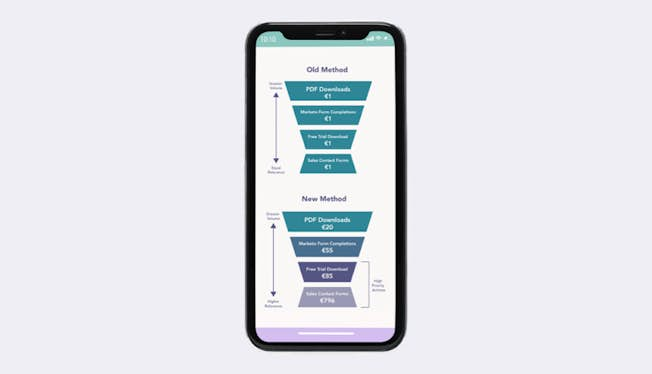
As a result of this strategic PPC campaign strategy, Trend Micro saw a 72% boost in leads as well as a 272% uplift in Return on Ad Spend (ROAS).
UberEats and Google Ads

The "Tonight I’ll be eating” campaign was designed to build UberEats’ brand reputation with celebrities and critical cultural moments. By working with display and video 360, the food delivery colossus gives access to a diverse mix of inventory resources.
"Display & Video 360 gives us the ability to execute everything in one shell. That allows for more precise control of frequency and reach across our entire media buy. It also creates operational efficiency for the team."—Joe Fried, Global Digital Director, MediaCom (UberEats’ campaign partner)
The dynamic and wonderfully visual PPC strategy earned UberEats a 10% boost in campaign reach in a growing and competitive market.
Air France and Microsoft Advertising
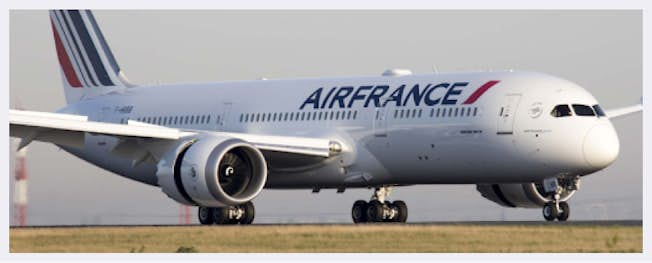
The travel industry took a devastating hit during the Covid-19 pandemic. To rebuild its brand reach and inspire reluctant customers to take trips, Air France turned to Bing's PPC platform, Microsoft Advertising.
By developing a creative mix of PPC ads aimed at acquiring new customers and highlighting the benefit of air travel, Air France leveraged the platform’s MSAN functionality to drive incremental conversions with its campaign assets.
The strategy earned Air France 3% in incremental conversions in 2021 coupled with a 29% drop in overall cost-per-acquisition
"MSAN is only available through Microsoft Advertising so we knew we would be getting access to a quality audience that couldn’t be targeted any other way."—Nicolas Pestourie, Deputy Head of Paid Search, Performics (Air France's campaign partner)
Read: Our guide on how to become a PPC specialist and discover how to get your new marketing career started.
PPC Marketing: Conclusion
PPC isn't overly difficult, but it does require some knowledge of how the process works. It also commands a great deal of planning and research if you want to get the best ROI from your efforts.
The key things to remember include optimizing your landing page before anything else, and then setting a budget and choosing a bidding strategy. Then comes the onerous—but achievable—task of researching and choosing the right keywords.
This is followed by creating your ad. And once the ad launches, you have to track, measure, test, and tweak to make sure that your PPC efforts are producing the traffic, conversions, or leads you deserve.
Optimize your paid search campaigns to drive traffic and revenue
To get ahead of the pack and kickstart your career as a PPC specialist, learn the most effective and cutting-edge ways to create and implement paid search campaigns. In partnership with search expert Neil Patel, DMI has created a Professional Diploma in Search Marketing that covers the fundamentals of search and also dives into analytics, strategy, and much more. Get started today!
Related
Upgrade to Power Membership to continue
your access to thousands of articles, toolkits, podcasts, lessons and much much more.
Become a Power Member- Login
- View Courses
- - - -
- Courses
- Resources
- - - -
- My Account
- Change Password
- Logout





